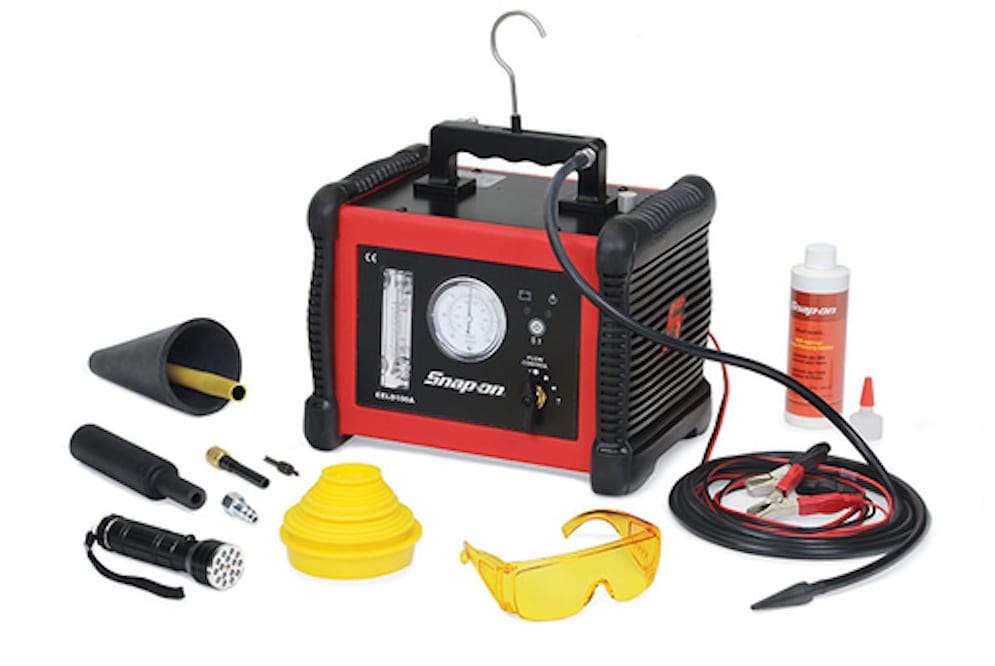

Today's cars, trucks, and SUVs are all equipped with advanced emissions control and monitoring systems. A leak or failure in any of these components can cause a vehicle to fail smog inspections, reduce engine efficiency, and also impact fuel economy. When this occurs, vehicle owners often reach out to mechanics to find the source of their emission leaks quickly. This process is expedited when the mechanic utilizes an evaporative smoke machine to accurately diagnose the emission leaks.
What is an evaporative smoke machine?
Emissions leaks are typically caused by a loose fitting vacuum line or a line that has cracked. However, with multiple lines and fittings controlling the emissions systems on today's modern cars, trucks, and SUVs, pinpointing the precise location of the leak is tedious and time consuming. Most ASE-certified mechanics utilize an evaporative smoke machine to discover the exact location of the leak. The machine itself is powered by either traditional shop air or nitrogen-charged air systems, which are becoming more popular in service stations that provide tire service.
The machine attaches to an EVAP purge solenoid, which is commonly located near the driver's front strut, next to the engine itself. It sends a mixture of air and a colored dye into the evaporative emissions lines when the system is activated. If there are leaks due to cracked hoses or loose fittings, the colored smoke will purge and permit the mechanic to find the leak quickly. Most EVAP smoke machines have a variable smoke flow system and automatic shut of solenoids that restricts the flow of colored smoke to the desired setting for the mechanic.
How to correctly use the evaporative smoke machine correctly
In order for the EVAP smoke machine to properly diagnose a leak in the emissions system, the mechanic will have to fine-tune the process based on the vehicle's make, model and year. In general, the EVAP system has two line attachments: one that runs to the back of the vehicle near the gas tank and one that runs towards the fuel injector system. To find a leak in the emissions system, the mechanic should complete the following steps:
Download error codes from the ECM
Once the error codes show up as having a minor or major leak in the emissions system, the mechanic will prepare the vehicle for the evaporative smoke test.
Hook up the EVAP smoke machine correctly. This will include attaching the primary line to the emissions hose that runs to the back of the vehicle.
Next, in order to block the line, use a set of vice grips to pinch off the EVAP line located next to the leak detection pump, next to the gas tank.
Activate the smoke machine
When the machine is turned on, any leaks will be displayed by smoke that will blow through the broken hose, or connector that is loose.
The correct use of the EVAP smoke machine will reduce the time of diagnosing emissions leaks significantly, while also streamlining the process of completing repairs. Not only does this machine permit a mechanic to quickly repair emissions leaks, but it also increases dependability and reliability, which improves the customer's confidence in the mechanic's ability to do the job right – the first time.
There are several quality tool companies that sell these systems directly to mechanics that depend on them to service their customer's vehicles. If you’re already a certified mechanic and you’re interested in working with YourMechanic, submit an online application to work for YourMechanic for an opportunity to become a mobile mechanic.



